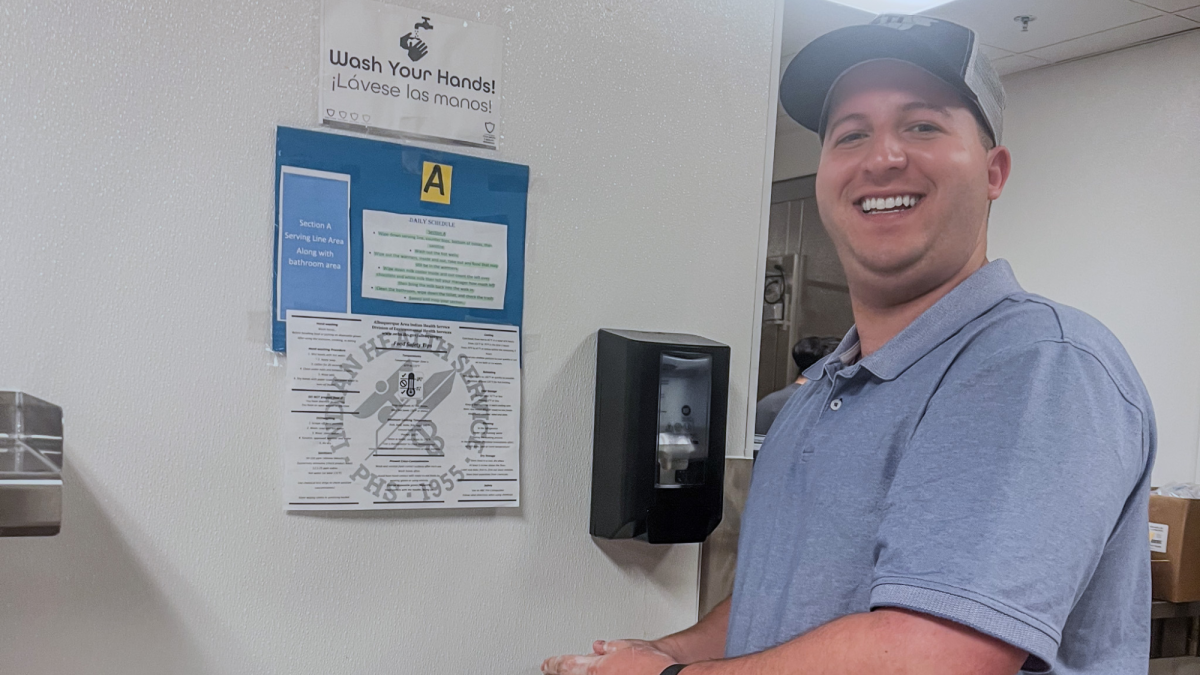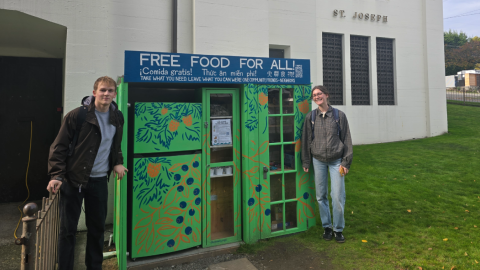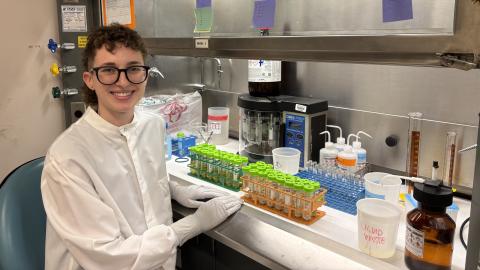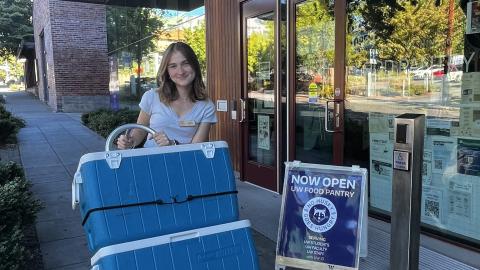Jorge Rivera-Gonzalez
Ph.D., Environmental Health Sciences (Industrial Hygiene and One Health)
Hometown
Puerto Rico
Future plans
Pursuing a career as an Environmental Health Officer.
“I am passionate about helping others, and this experience and community engagement reinforced my ‘why’ and desire to continue learning.”
-Jorge Rivera-Gonzalez
I spent last summer in eastern Arizona working with the Indian Health Service (IHS) through the Junior Commissioned Officer Student Training and Extern Program (JRCOSTEP), a program sponsored by the Commissioned Corps of the U.S. Public Health Service.

I approached every day as a new learning opportunity. The days were long, but that was one of the best parts of the job. One never knew what each day brought: I assisted with efforts to prevent Rocky Mountain spotted fever, helped investigate animal bites, and co-taught trainings on food management and handling, among many other things.
When I first heard about the program, the work and mission of the IHS Division of Environmental Health Services (DEHS) inspired me. Throughout my studies, I have always sought new challenges and opportunities in hopes of becoming a well-rounded public health professional, allowing me to combine my background in Spanish, biology, environmental health, occupational epidemiology and industrial hygiene.
I wanted to continue learning and obtain more hands-on experience, and my assignment with the Eastern Arizona District Office was a great fit in that regard. Working with my preceptor, District Environmental Health Officer CDR Sarah Snyder, I learned how to lead by example and perform all of the responsibilities within the IHS Office of Environmental Health and Engineering.
From training to teaching

I participated in and led different surveys on topics including food, pool, institutional, septic system and community liquid waste. I also assisted with a campaign to prevent Rocky Mountain spotted fever on the San Carlos Apache Reservation, surveillance for animals that could be vectors of disease in the Kaibab-Paiute Reservation, and a rabies vaccination clinic on the Fort Apache Indian Reservation.
When a rabid bobcat was encountered in town with suspected human and animal exposures, I led animal bite investigations. I also participated in surveys about seat belt use and temporary food vendors during Pow Wow and rodeo events.
I co-taught two Head Start trainings and courses to prepare certified food managers and food handlers. In addition, I passed my examination to become a certified food manager instructor. In preparing to teach the course, I gained a better understanding of community and facility needs in the areas we serve, and adapted the content to ensure clear communication and a positive learning environment.
Understanding workplace risk factors
For my summer project, I developed and tested a framework for creating a “risk-based” model for institutional facility surveys using 20 years of Occupational Safety and Health Administration (OSHA) data.
Currently, IHS uses an institutional form to guide staff through inspections of 10 different facility types. The form is very heavy on fire protection, which accounts for less than 1% of all the injuries and deaths in these facilities.
The framework that we developed was built on the work of Environmental Health Specialist, Sherry Mitchell, which identified falls, violence and exposure as major causes of injury and death rather than fire. Using hotels as a case study, I analyzed 20 years of fall and violence data to identify risk and protective factors that DEHS staff could incorporate into their inspection reports to help prevent future occurrences.
The analysis led to recommendations to expand the survey’s emergency preparedness and facilities management sections. We suggested adding a new section, ladder safety, to include proper use of ladders in the workplace to prevent slips, trips and falls. This framework can be further used on other injury and facility types to flush out risk and protective factors to improve the survey’s effectiveness.
Looking toward the future
I leave this opportunity motivated and determined to make a difference in my future profession. I am extremely grateful for this opportunity and will take with me what I learned.
I hope to earn the Registered Environmental Health Specialist credential this year. After graduation, I intend to complement this certification by becoming a certified industrial hygienist and a certified safety professional. I am passionate about helping others, and this experience and community engagement reinforced my “why” and desire to continue learning.
I look forward to pursuing a career as an environmental health officer and protecting the health of American Indians and Alaska Natives from environmentally related disease and injury.
This blog is adapted from the original post on the Indian Health Service website.




